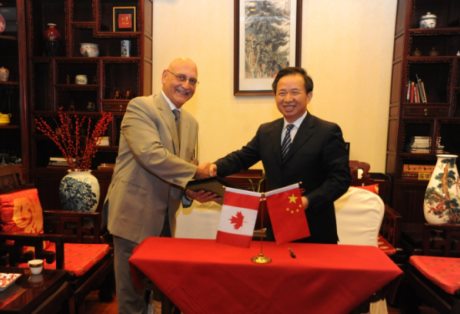Canada and China sign regulatory MOU
05 September 2016
Nuclear regulators from Canada and China have signed a memorandum of understanding (MOU) expressing their commitment to cooperate and exchange nuclear safety regulatory information.
 |
| CNSC executive vice president Ramzi Jamal (left) and NNSA administrator Li Ganjie at the Beijing signing ceremony (image: CNSC) |
The MOU was signed in Ottawa by Canadian Nuclear Safety Commission (CNSC) president Michael Binder and in Beijing by Li Ganjie, administrator of China's National Nuclear Safety Administration (NNSA). It came into effect on 28 August.
It provides a framework for the CNSC - Canada's national nuclear regulator - and the NNSA - China's regulator of nuclear safety - to exchange technical information on topics such as the regulation of nuclear facilities and radioactive sources, and radiation protection. The document provides guidance on the arrangement of cooperative activities and responsibilities for the security of information exchanged by the two regulators.
Binder said such arrangements between regulators were "very useful", particularly with states that use Candu pressurized heavy water reactor technology. "They enable us to exchange information, experience and best practices, and to enhance training," he said.
China has two Candu 6 pressurized heavy water reactors in operation at Qinshan Phase 3. It has also signed an agreement for the construction of a third Candu unit at Atucha in Argentina.
The CNSC in 1997 signed an administrative agreement with the China Atomic Energy Authority, to facilitate the fulfilment of the cooperation agreement on the peaceful uses of nuclear energy signed by China and Canada in 1994.
The CNSC maintains similar arrangements with nuclear regulators in 19 other countries.
Researched and written
by World Nuclear News